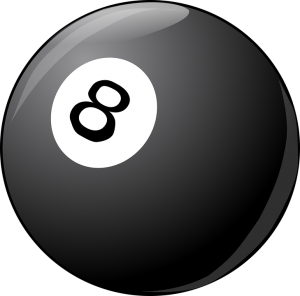Odds and Roulette
 The first time I was ever exposed to roulette was when I was only a child, maybe about 7 or 8 years old. I was watching a very old movie on my parents’ TV, and I saw something that, even to my young mind, actually looked kind of fun – a few men sitting around a giant wheel, spinning it and placing bets on numbers. Of course, now that I’m an adult and am rewatching the same scene – from the classic movie “Casablanca” – I’m noticing quite a few things that I missed as a kid. The scene is masterfully directed, building up the suspense while clearly presenting the main character Rick Blaine as someone who is completely in control. I also noticed that despite the fact that, as the name would suggest, the movie is set in Casablanca (the largest city of Morocco), where the official languages are Arabic and Berber, the croupier is speaking French when talking about the roulette. Now that I think about it, it is entirely possible that the characters were playing French roulette – which is surprising, considering the fact that it actually offers the worst odds for the casino and the best odds for the players. But then again, should we really be surprised considering how easily Rick rigs the game to give the Bulgarian couple money?
The first time I was ever exposed to roulette was when I was only a child, maybe about 7 or 8 years old. I was watching a very old movie on my parents’ TV, and I saw something that, even to my young mind, actually looked kind of fun – a few men sitting around a giant wheel, spinning it and placing bets on numbers. Of course, now that I’m an adult and am rewatching the same scene – from the classic movie “Casablanca” – I’m noticing quite a few things that I missed as a kid. The scene is masterfully directed, building up the suspense while clearly presenting the main character Rick Blaine as someone who is completely in control. I also noticed that despite the fact that, as the name would suggest, the movie is set in Casablanca (the largest city of Morocco), where the official languages are Arabic and Berber, the croupier is speaking French when talking about the roulette. Now that I think about it, it is entirely possible that the characters were playing French roulette – which is surprising, considering the fact that it actually offers the worst odds for the casino and the best odds for the players. But then again, should we really be surprised considering how easily Rick rigs the game to give the Bulgarian couple money?
The most popular type of roulette, the one you’ll most commonly find around the world and online, is the European roulette (which is different from French roulette, but we’ll get to that in a second). If you’ve ever played roulette in your life, chances are it was European roulette. The rules are fairly standard – 36 different colored squares (37 if you count the green zero), as well as options to bet on a color, on odd or even or on groups of numbers. As I said, standard stuff! As a result, most variations of roulette that you’ll find in online casinos (high stakes, low stakes, “Deal or No Deal” and more) are based precisely on European roulette. In America, however, roulette is a bit different, hence the moniker American Roulette for that particular version. The thing is, in Vegas they didn’t think that roulette was particularly profitable, so they decided to double the house edge and decrease the odds of the player. How? Well, the answer lies within the little green zero I just mentioned. When betting, most players like to play it safe and bet on colors, odd/even or number groups. However, that zero doesn’t really fall into any of those categories when it comes to roulette, so unless someone has specifically betted on zero, the house is going to keep all of the bets for that particular spin, thus ensuring that the casino gets something out of this. As I said, in the US the house edge is doubled, which means that a second zero (00) has been added to the mix, making it twice as likely for gamblers to lose everything. As such, American roulette has the worst odds of all.
What about French roulette, though? How is it different from European roulette, and why is it better? Well, as always, the trick is in the zero. French roulette functions literally exactly like its European counterpart, right down to having one 0, but there’s a substantial difference – if the house wins by virtue of the ball landing on 0, any players who lost get to take half of their bet back. That doesn’t really increase the odds in any substantial way, but it does give players a safety net of sorts – even when they lose, they don’t lose as much as they otherwise would. So, if you can help it, it’s always best to play French roulette. Just be wary of a nicely dressed Humphrey Bogart-lookalike whispering something about 22.
Read More There are many beginner guides out there that cover all the little details that a new player should know about online casinos. The truth is, though, some of these details are easier to figure out than others so those guides are often filled with obvious and unnecessary facts that distract you from the ones that are not that obvious but you should definitely know. This is why, instead of yet another casino guide, I decided to simply make a post where I focus on those specific details that a new player might not konw. So here are 8 must-know facts about casinos sites:
There are many beginner guides out there that cover all the little details that a new player should know about online casinos. The truth is, though, some of these details are easier to figure out than others so those guides are often filled with obvious and unnecessary facts that distract you from the ones that are not that obvious but you should definitely know. This is why, instead of yet another casino guide, I decided to simply make a post where I focus on those specific details that a new player might not konw. So here are 8 must-know facts about casinos sites: Hey, mates, the Kid here, bringing you the newest blog dedicated to all things gambling but mainly to online casino tips and news. Here I’ll regularly post useful articles on various topics related to real-money games and sites available to Brits. And all will be for free, no strings attached!
Hey, mates, the Kid here, bringing you the newest blog dedicated to all things gambling but mainly to online casino tips and news. Here I’ll regularly post useful articles on various topics related to real-money games and sites available to Brits. And all will be for free, no strings attached!